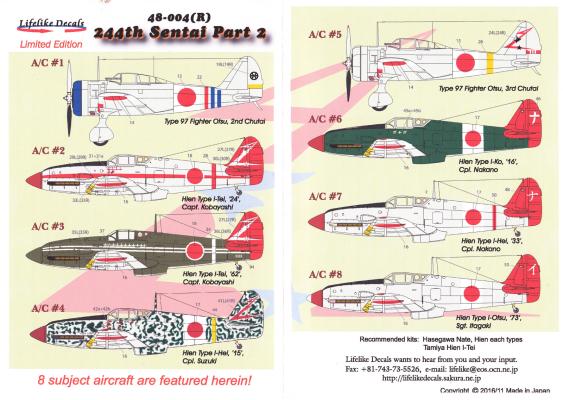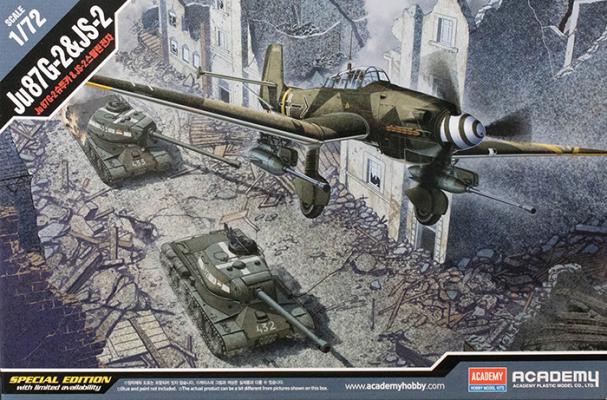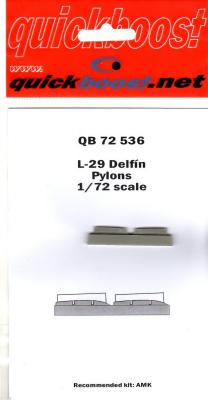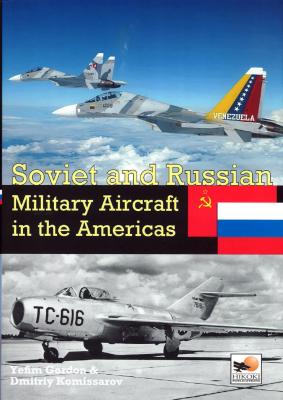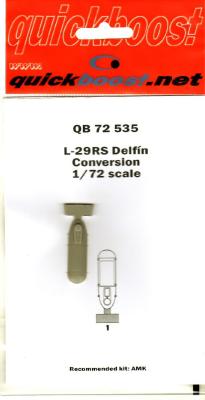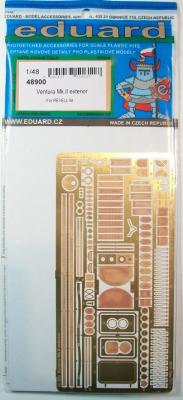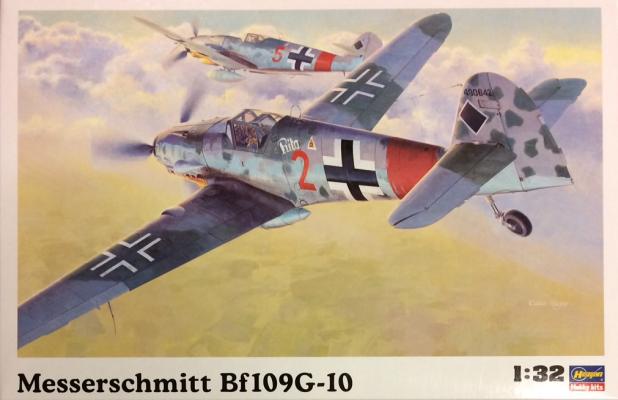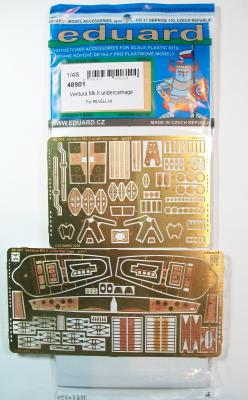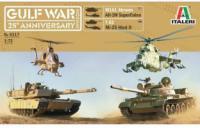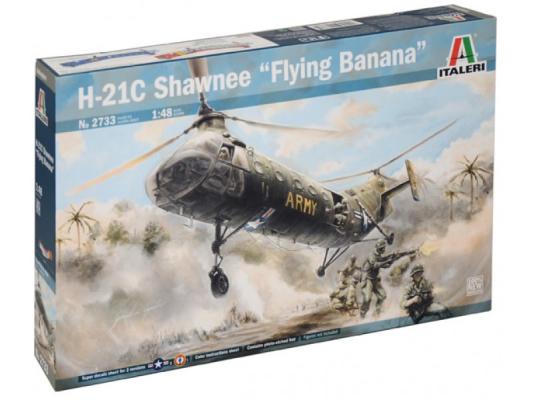The 244th Sentai (Fighter Group / Fighter Regiment) was formed in 1941 and charged with the defense of Tokyo. As apparent from the options included in this decal set, the unit started flying Nates and later turned in their Ki-27s for Ki-61s & Ki-100s.
History
Ju 87G-2…The First flight of a Ju 87 occurred in 1936, and although obsolete by 1943, the airframe found a new lease on life with the addition of two 37 mm (1.46 in) Flak 18 guns under the wings. The first flight of the G model occurred on January 31st, 1943. In April of '43 the first production G models were delivered to frontline units and, even though obsolete and outnumbered, proved very successful in their role as tank killers.
JS-2…. Designed as a breakthrough tank with armor that could withstand the fearsome German 88mm gun and an armament that could take on the Tiger and Panther tanks, the JS-2 (named after Joseph Stalin, IS-2 Iosif Stalin in the original Russian) entered service in 1944. Armed with a massive A-19 122mm main gun and up to 120mm of armor in vital areas, the JS-2 was a very formidable weapon that was better in every way than its predecessor, the KV-1.
The L-29 Delfin was a jet-powered trainer airplane that was designed by the Aero Company of Czechoslovakia. An excellent kit of the Delfin has recently been released in 1/72 scale by AMK. Although this kit, in my opinion, is very good, our friends at Aires/Quickboost have found some areas where the accuracy of various parts can be improved.
This set from Quickboost provides wing mounted pylons. The AMK kit provides combination pylon and fuel tanks. These look good but there are cases where the modeler may want to build a model without the wing tanks. The modeler may want to include some wing mounted munitions or they may simply want a model with only the pylon. Many photos of the L-29 on display etc. show the plane with only the pylons.
Yefim Gordon was born in 1950 in Vilnius, Lithuania (then part of the Soviet Union) and graduated from the Kaunas Polytechnic Institute in 1972. He has been researching Soviet and Russian aviation history for more than 40 years. A professional photographer, Yefim Gordon has published hundreds of features and photographs in Russian and foreign aviation magazines. He has authored and co-authored more than 120 books on Soviet and Russian aviation.
Dmitriy Komissarov was born in 1968 in Moscow and graduated from the Moscow State Linguistics University in 1992. He has worked as a translator ever since, with the most of his work associated with his interest in aviation. Dmitriy Komissarov has authored two books and translated or co-authored more than 50 others. He has also written numerous magazine features in two languages on Soviet and Russian aviation.
The L-29 Delfin was a jet-powered trainer airplane that was designed by the Aero Company of Czechoslovakia. An excellent kit of the Delfin has recently been released in 1/72 scale by AMK. Although this kit, in my opinion, is very good, our friends at Aires/Quickboost have found some areas to give modelers some additional options.
The L-29 Delfin was produced in several variations, including a photo reconnaissance version. This was accomplished by installing a specific conversion package under the fuselage. This version was used by the Czech Air Force and other Warsaw pact countries as well as by several export customers including Egypt and Vietnam.
This is a photoetch exterior upgrade set to for the Revell Ventura MkII. The set adds some great additional details to the kit.
In the packet is
- 1 large photoetch steel sheet
- 1 instruction sheet
Summary
This is a fantastic set and adds some really nice additional details and parts to the kit. The set includes machine gun details, light surrounds, engine wiring, lots of access panels, Main door, and many may more parts. The set does require some hard work when it comes to adding all the engine wiring but it’s well worth the effort. The only issues I found were A- the items 48 and 49 were a little too big and may have been better installed at stage 10 of the build. B- The parts 24 and 25 were a little short. If you have the Revell kit you have to get this set as it adds details that make the kit really look great!
History
The Bf-109G-10 aircraft is rather unique by the fact that it was somewhat of a ‘Frankenstein’ aircraft put together with available resources at the time. The airframe consisted of a standard G model and incorporated a DB 605 D-2 engine. The reasoning for this was an attempt to create as little disruption to factory production of the Bf-109K’s.
Other external differences from the standard G model were deeper air cooler intakes, wide blade props, larger rudder, a Morane antenna, larger main wheels, and an extended tailwheel to provide a slightly better forward view.
There was a total of 2600 G-10 built after 1944 and one lone survivor resides in the National Museum of the United States Air Force in Dayton, Ohio.
This is a photoetch undercarriage upgrade set to for the Revell Ventura Mk II. The set adds a great deal of detail to the kit.
In the packet is:
- 2 x large photoetch steel sheet
- 1 instruction sheet
Summary
This is a fantastic set and the kit really needs this as it’s a major improvement to the land gear and the landing gear bays. The set does require some work removing the simple molded details on the kit parts. The set was simple and easy to install, the only issue I had was one part had some damage due to the photo etch process but this is the first time I have ever seen this. If you have the Revell kit you have to get this set!
Italeri has put together a set of models to commemorate the anniversary of the Gulf War. The set includes tanks and helicopters from the United States and Iraq. Iraq is represented by the T-62 main battle tank and the Hind-D MI-25 helicopter, while the U.S. is represented by the M-1A1 main battle tank and the Cobra AH-1W helicopter.
Since this is a large box of models, Jim Pearsall asked me if I would like to build the Helos from the set. I was glad to accept because both of these models are on my “Models I want to build list”.
This kit has been long in coming; a 1/48 scale H-21 appears to be a popular seller; first in the 1950’s with “Helicopters for Industry” corporation having tooled a rudimentary but well-done for the time model of the H-21A; released approximately in 1956, the molds of this kit (along with that company’s Hiller “ramjet” powered flying jeep helicopter with it’s rotor tip ramjet engines, and the H-19A), were then sold and marketed to Aurora around 1958.

